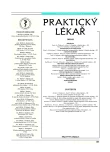Q fever: properties of the agent
Q-horečka: vlastnosti původce
Původce Q-horečky, Coxiella burnetii, je drobný pleomorfní gramnegativní kokobacil. Patří mezi jedny z nejrezistentnějších bakterií a odolává zejména vysychání. Může se proto stát nebezpečnou biologickou zbraní. Množí se pouze intracelulárně, a to ve fagolyzozomu. U coxiel byl popsán vývojový cyklus, který zahrnuje velkobuněčné a malobuněčné formy a tvorbu útvarů podobných sporám. V laboratoři se coxiely dají pěstovat ve žloutkovém vaku kuřecího embrya, na buněčných kulturách a na pokusných zvířatech, práce s nimi ale nese velké riziko laboratorní nákazy. Pasážováním na laboratorních objektech se virulentní antigenní fáze I mění na fázi II, která zhruba odpovídá R-fázi běžných bakterií. Akutní infekce probíhá hlavně jako atypická pneumonie, onemocnění podobné chřipce nebo hepatitida, chronická jako endokarditida. Q-horečka je typická zoonóza většinou profesionální povahy, přenosná zejména aerogenně. Lékem volby jsou širokospektrá antibiotika. Rutinní laboratorní diagnostika je založena na průkazu protilátek, nověji se doporučuje přímý průkaz pomocí polymerázové řetězové reakce.
Klíčová slova:
Coxiella burnetii – Q-horečka – mikrobiologie.
Authors:
M. Votava
Authors‘ workplace:
Mikrobiologický ústav LF MU a FN u svaté Anny v Brně
přednosta prof. MUDr. M. Votava, CSc.
Published in:
Prakt. Lék. 2005; 85(7): 385-387
Category:
Reviews
Overview
The agent of Q fever, Coxiella burnetii, is a minute pleomorphic gram-negative coccobacillus. It belongs to the most resistant bacteria and is namely resistant to desiccation. It can therefore become a dangerous biological weapon. It propagates intracellularly only, namely in the phagolysosomes. There has been described a developmental cycle in coxiellae, that includes macrocellular and microcellular forms and the formation of spore-like bodies. In the laboratory, coxiellae can be propagated in the yolk sac of chick embryos, in cell cultures, and in experimental animals, however, those procedures involve a great risk of laboratory infection. By passaging in the laboratory the virulent antigenic phase I passes to phase II which corresponds roughly to the R-phase in common bacteria. Acute infection mostly takes the course of atypical pneumonia, a flu-like affection, hepatitis, or chronic endocarditis. Q fever is a typical zoonosis, mostly profession-linked, the respiratory tract being the chief portal of entry. The remedy of choice are broad-spectrum antibiotics. Routine laboratory diagnostics is based on the presence of antibodies, more recently direct demonstration by the polymerase chain reaction has been recommended.
Key words:
Coxiella burnetii – Q fever – microbiology.
Labels
General practitioner for children and adolescents General practitioner for adultsArticle was published in
General Practitioner

2005 Issue 7
- Metamizole at a Glance and in Practice – Effective Non-Opioid Analgesic for All Ages
- What Effect Can Be Expected from Limosilactobacillus reuteri in Mucositis and Peri-Implantitis?
- Metamizole in perioperative treatment in children under 14 years – results of a questionnaire survey from practice
- Memantine Eases Daily Life for Patients and Caregivers
- Possibilities of Using Metamizole in the Treatment of Acute Primary Headaches
Most read in this issue
- Lemierr’s syndrome
- Horner’s syndrom: Topical diagnostics of the causative lesion (three case reports)
- Q fever: properties of the agent
- Q fever – clinical picture
